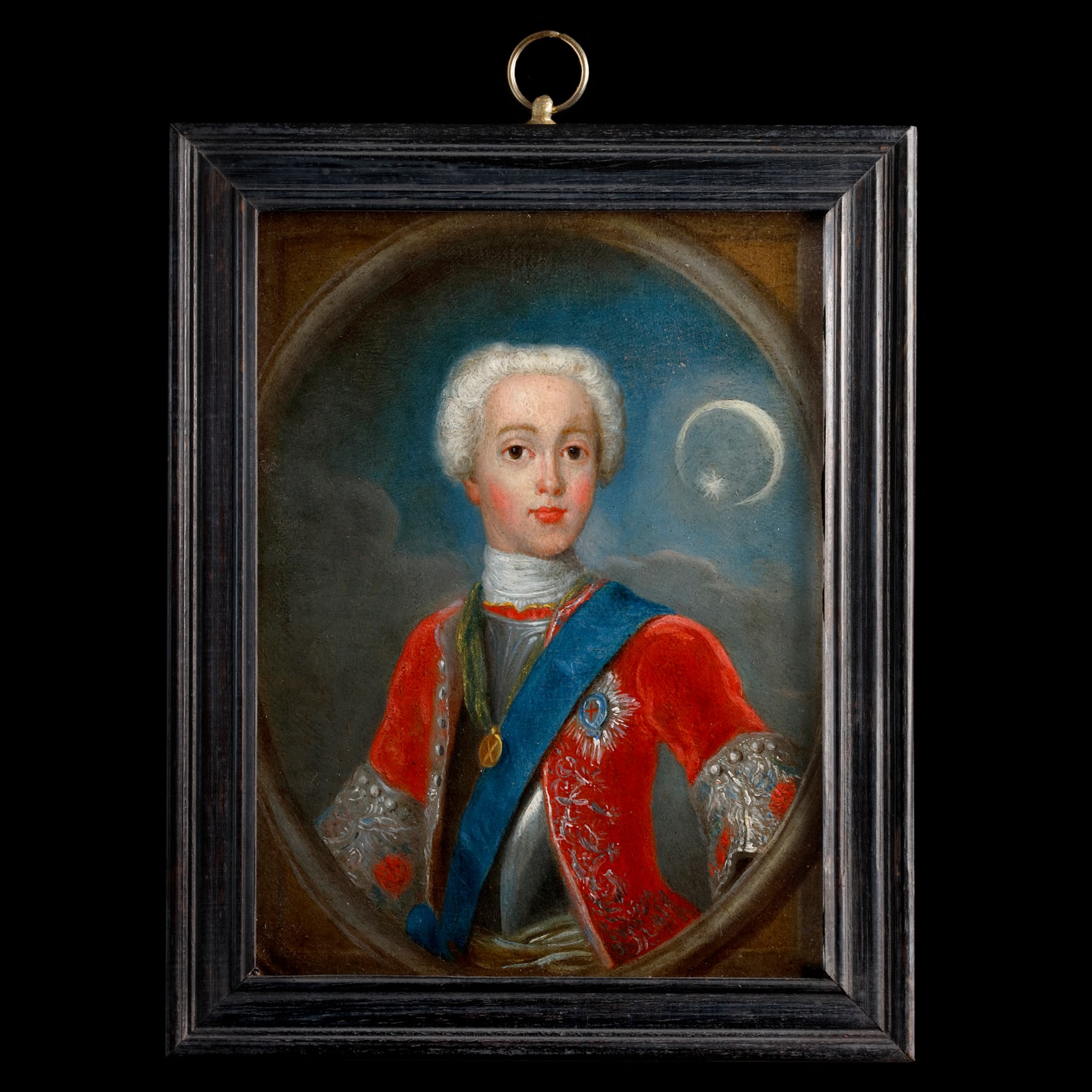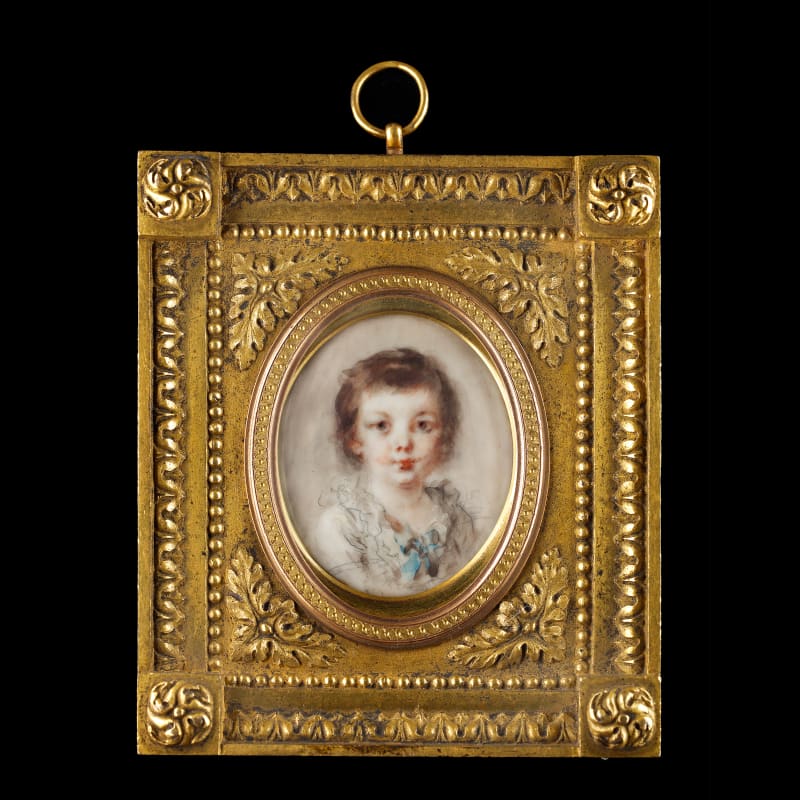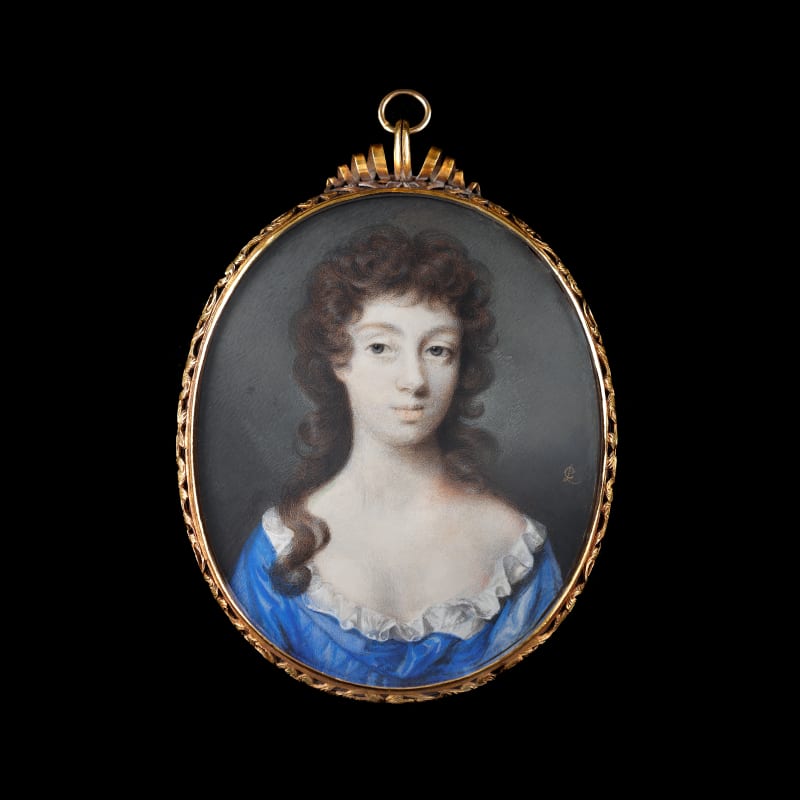

STUDIO OF ANTONIO DAVID
(1698-1750) Prince Charles Edward Stuart (‘Bonnie Prince Charlie’ or ‘The Young Pretender’) (1720-1788), wearing red figured coat with silver embroidery over armour breastplate, blue sash and breast star of the Order of the Garter, the Order of the Thistle suspendedThis portrait, painted at the exiled court of the sitter’s father, Prince James Francis Edward Stuart (known as ‘The Old Pretender’) relates to an oil portrait dated 1732 by the Italian artist Antonio David.[1]This portrait, in turn, relates to a commission from the Duke of Bedford for a double portrait of the prince and his younger brother and in the summer of 1729, two separate portraits were sent to him from David in Rome.
The miniature version moves the Order of the Thistle into a prominent position, whereas in David’s original portrait it hides behind the sash of the Order of the Garter. The present work would appear to be one of two extant versions which include a star within a moon in the background.[2]The high quality of the painting suggests that it came from David’s studio or workshop, where painters would have been employed to produce portable versions of his large oil portraits.
The symbolism of the moon...
This portrait, painted at the exiled court of the sitter’s father, Prince James Francis Edward Stuart (known as ‘The Old Pretender’) relates to an oil portrait dated 1732 by the Italian artist Antonio David.[1]This portrait, in turn, relates to a commission from the Duke of Bedford for a double portrait of the prince and his younger brother and in the summer of 1729, two separate portraits were sent to him from David in Rome.
The miniature version moves the Order of the Thistle into a prominent position, whereas in David’s original portrait it hides behind the sash of the Order of the Garter. The present work would appear to be one of two extant versions which include a star within a moon in the background.[2]The high quality of the painting suggests that it came from David’s studio or workshop, where painters would have been employed to produce portable versions of his large oil portraits.
The symbolism of the moon and star refer to a medal, struck to commemorate the eleventh birthday of the prince in December 1731. The medal shows a star, without a moon, and the obverse states MICAT.INTER.OMNES. (He shines in the midst of all).As the hope for a Stuart restoration, the young Prince Charles was the bright light shining in the darkness (i.e. hope in the dark days).[3]
As the contentious heir to the throne, portable portraits such as this were vitally important to supporters of the Jacobites. Not only did commissioning such a work show loyalty, but it was also important to disseminate images of the young Prince (eleven years of age in this portrait) as strong, healthy and masculine. His armour breastplate indicates his necessary military character, whilst the presence of both the Garter Sash and Thistle show his loyalty and claim to both the English and Scottish thrones.
Portraits of the prince continued to be circulated even after it became apparent that a Stuart restoration was unattainable. From regal childhood portraits, such as the present work, they progressed to nostalgic and largely naïve images of the ‘Highland prince’, particularly after the Rebellion of 1745. The superior quality of this image also correlates to a time of high hopes for the Jacobite cause.
[1]National Galleries of Scotland, PG. 887/ PG. 888, dated 1732
[2]Another version of this portrait was one of a pair (with the sitter’s brother, Henry Benedict Stuart, Cardinal York) sold Christie’s, London, 19 May 2016, lot 109.
[3]We wish to thank Professor Edward Corp for suggesting the connection to the medal and its symbolism (communication by email with Emma Rutherford, June 2020)











